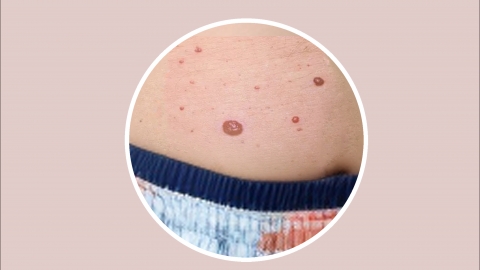What is hemangioma, and what should be done about it?
Under normal circumstances, hemangiomas may be caused by abnormal embryonic development, hormonal fluctuations, strawberry hemangioma, cavernous hemangioma, or arteriovenous (racemose) hemangioma. It is recommended to seek medical attention promptly, identify the underlying cause, and then improve the condition under a doctor's guidance through general management, medication, or other treatments. Specific analyses are as follows:

1. Abnormal embryonic development: During the embryonic period, abnormal differentiation of vascular tissues leads to excessive proliferation of vascular endothelial cells, resulting in hemangioma formation, which typically appears in infancy. If the hemangioma is small and asymptomatic, regular observation is recommended, along with avoiding friction or irritation. Some infantile hemangiomas may spontaneously regress as the child grows.
2. Hormonal fluctuations: In adult women, changes in estrogen levels during pregnancy, menopause, or other stages may stimulate endothelial cell proliferation, triggering or worsening hemangiomas. Maintaining regular sleep patterns, avoiding late nights, and minimizing intake of exogenous hormones—such as refraining from overusing hormone-containing cosmetics—can help stabilize hormone levels and slow hemangioma progression.
3. Strawberry hemangioma: Caused by capillary proliferation, this type presents as red or purplish-red raised patches, commonly seen on the skin of infants. Patients may follow medical advice to use medications such as timolol maleate ophthalmic solution, propranolol tablets, or prednisone tablets to inhibit vascular proliferation. Laser therapy can also be used to destroy abnormal blood vessel tissue.
4. Cavernous hemangioma: Composed of numerous dilated cavernous vascular sinuses, this type feels soft and has unclear borders, possibly accompanied by local swelling. Under medical supervision, drugs such as sodium morrhuate injection, polidocanol injection, or pingyangmycin injection may be used to induce endothelial cell necrosis and fibrosis, thereby reducing the size of the hemangioma.
5. Arteriovenous (racemose) hemangioma: Formed by abnormal connections between arteries and veins, this type often presents with noticeable pulsation and audible bruits, potentially affecting local blood circulation. Medication has limited effectiveness; surgical excision of the hemangioma is usually required to completely remove the affected vascular tissue. Alternatively, interventional embolization may be performed to block the abnormal vascular channels, improve local blood flow, and prevent disease progression.
In daily life, it is important to protect the area affected by hemangioma, avoiding trauma or pressure that could lead to rupture and bleeding. Regular follow-up evaluations should be conducted to monitor changes in the size and appearance of the hemangioma. A diet avoiding spicy and irritating foods is recommended, with increased intake of fresh fruits and vegetables rich in vitamins. Proper scientific care can reduce discomfort caused by hemangiomas and support overall health.





